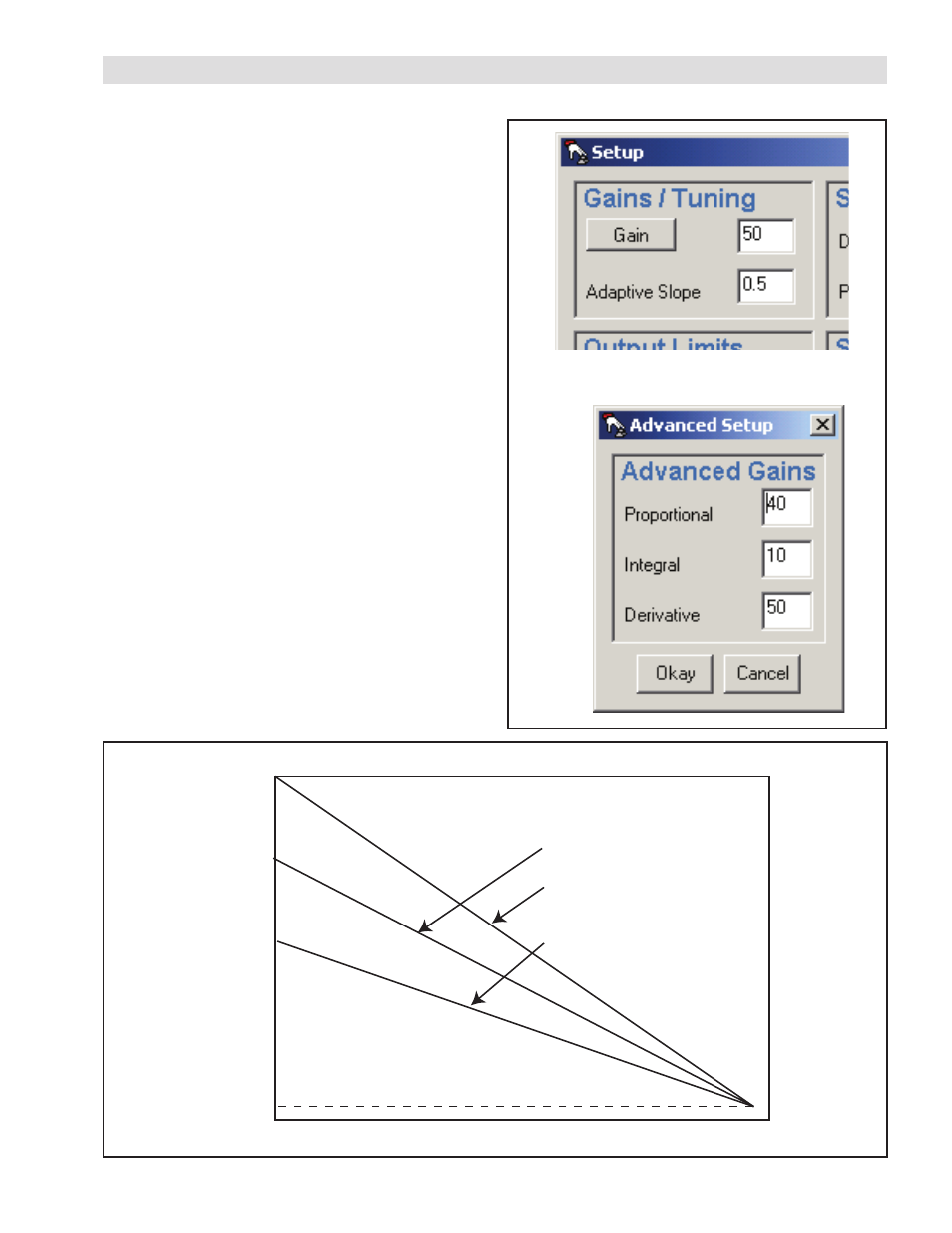Nexen RSD100 964520 User Manual
Page 21

1
FORM NO. L-21107-H-0108
Figure 1
Effects of Adaptive Slope on Gain
D
ia
m
et
er
&
G
ai
n
s
Roll Diameter Slope at:
Adaptive Slope = 0.75
Adaptive Slope = 1.0
Adaptive Slope = 0.50
Full Roll
Gain
Core
The RSD100 uses a P (Proportional), I (Integral), and D
(Derivative) control algorithm. This PID algorithm adjusts
the control output to obtain the desired response of
a dancer arm. The Proportional term corrects for the
difference between the arm’s position and the position
setpoint. Hence, the larger the difference, the larger
the response from the Proportional term. Next, the
Integral term corrects for longer-term position errors and
its response increases with time whenever there is a
position error. Last, the Derivative term corrects for fast
changing position errors and the faster the arm moves
the larger the Derivative response.
B
ASic
t
uning
Most applications only require adjustment of GAIN and
ADAPTIVE SLOPE to tune the RSD100. For extreme
applications, the RSD100 offers advanced tuning
parameters (See Advanced Tuning).
g
Ain
The GAIN value adjusts the P, I and D gains
simultaneously. The ratio between P, I and D is set to
a factory default of 4:1:5 (P:I:D), which is the optimum
ratio for most dancer systems. Adjustment of these
ratios should not be necessary, however the ratios can
be adjusted by clicking the GAIN button and entering
new values in the Advanced Setup window (Refer to
Figure 14).
A
DAptive
S
lOpe
The ADAPTIVE SLOPE range is from 0.1 to 1.0. A slope
of 1 means that the gains will change in direct proportion
to the change in diameter for DBA or output for OBA.
An ADAPTIVE SLOPE of 0.5 will cause the slope of the
gains to be 50% of the diameter (DBA) / output (OBA)
slope. The default ADAPTIVE SLOPE is 0.5.
9.0 GaINS / TUNING
Figure 1
(See Figure 1 for en-
tire Setup Window.)
continued...
